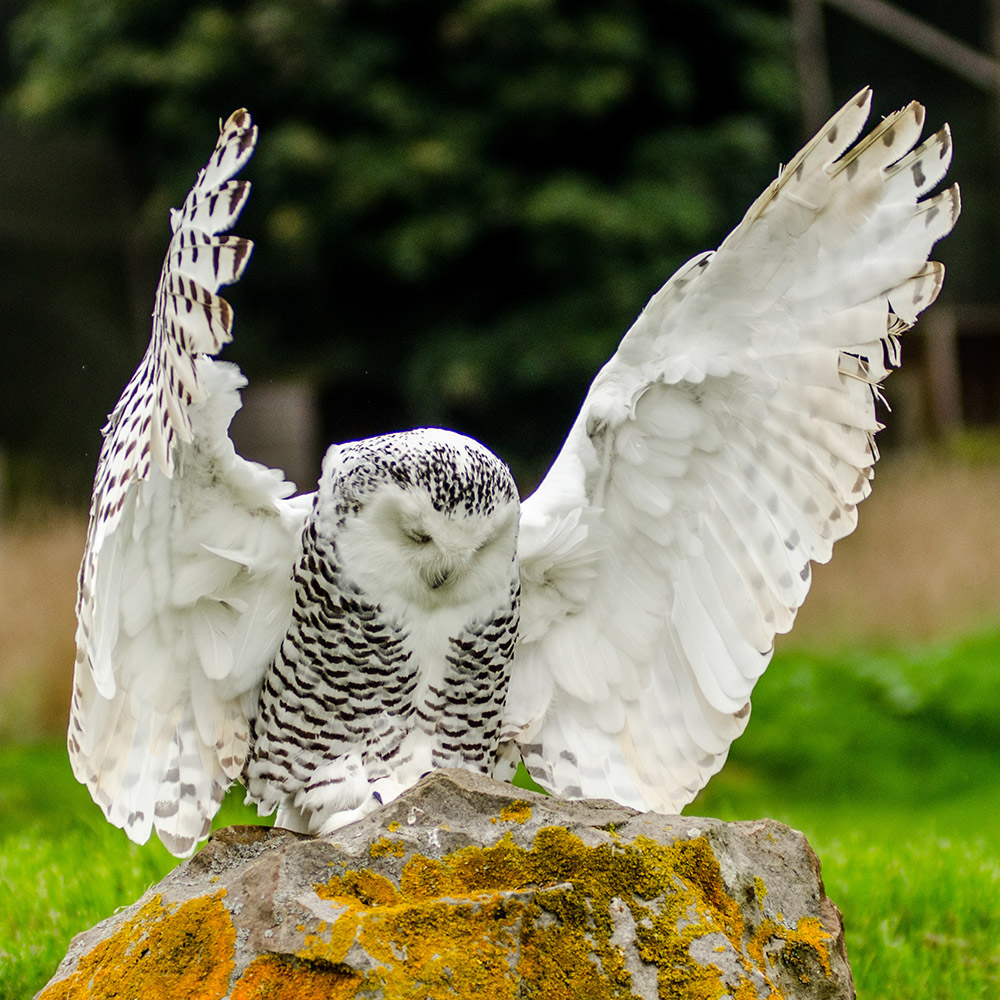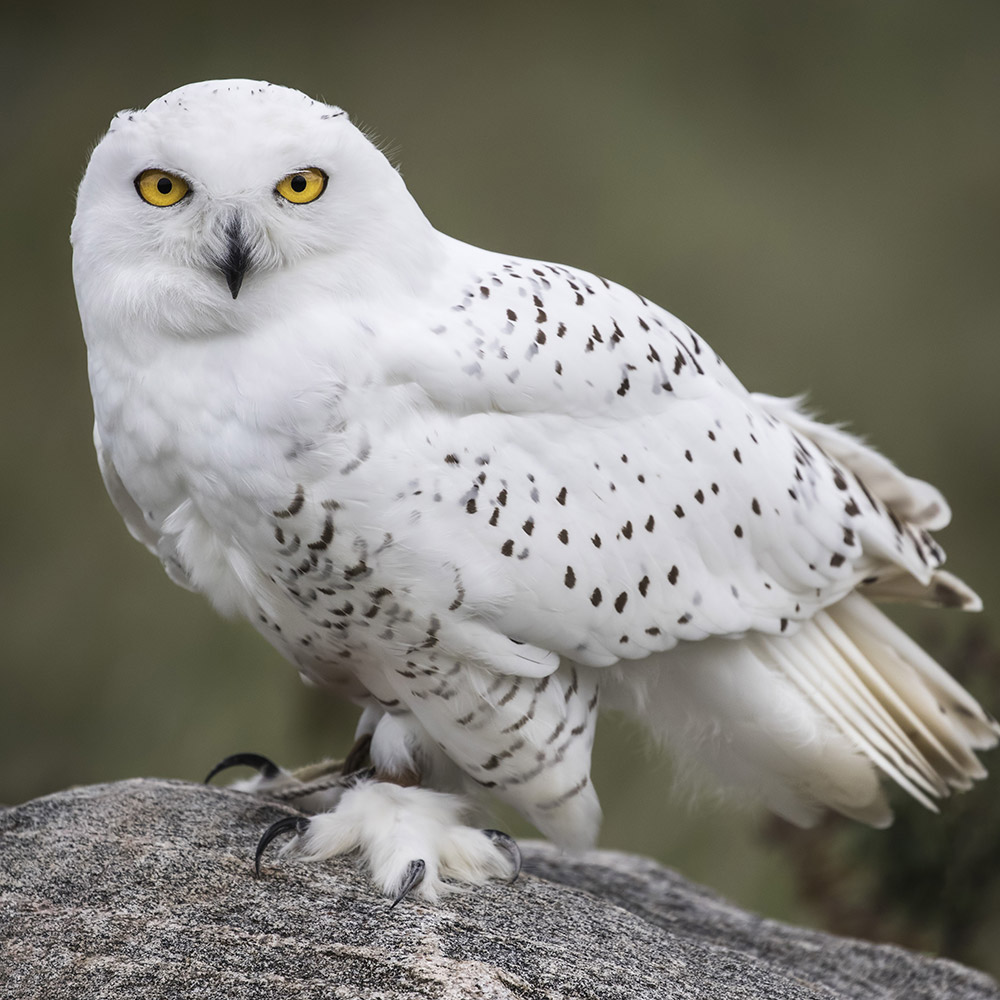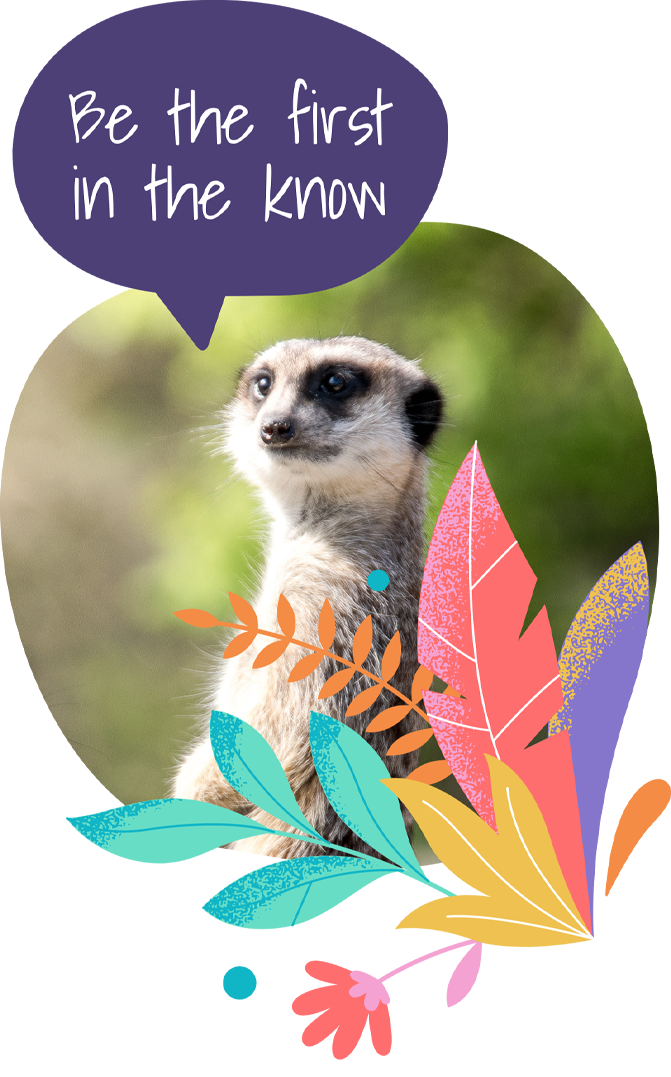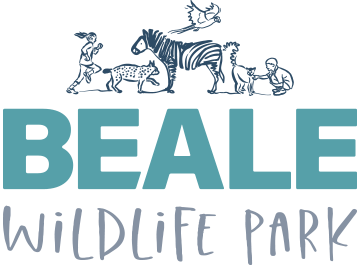
Diet
Snowy Owls mainly eat mammals ranging from small rodents to large hares. They also eat birds ranging in size from small songbirds to medium-sized geese.

Habitat
Snowy Owl’s natural habitat is North America.
Population
Global population of approximately 290,000 individuals.
Lifespan
In captivity birds have reached 28 years.
Snowy Owls (Bubo scandiacus) are largely white owls, marked with narrow brown bars and spots. They have golden colored eyes and their toes and claws are thickly covered with feathers. Their dark coloured bills are short, strong and sharply pointed. Females have more dark markings.
Behaviour: Unlike most other owl species, Snowy Owls hunt mainly in the daytime. Snowy Owls are highly nomadic and their movements are tied to the abundance of their primary prey species, lemmings. They are known to aggressively defend their nests and will attack those that disturb their nests.
The number of eggs laid depends largely on food availability. When food is limited, typically 3 to 5 eggs are laid. When food is plentiful, 7 to 11 eggs can be laid. Incubation lasts about 32 days. The male provides the mother and the young with food. The young owls begin to leave the nest around 25 to 26 days after hatching. They are not able to fly well until at least 50 days of age. They continue to be fed by the parents for another 5 weeks after they leave the nest.
More of our animals you may like to meet
Subscribe to our newsletter
Stay up to date with all that is happening at the park and receive exclusive offers and news.
You can unsubscribe at any time by clicking the link in the footer of our emails. For information about our privacy practices, please visit our website.
We use Mailchimp as our marketing platform. By clicking below to subscribe, you acknowledge that your information will be transferred to Mailchimp for processing. Learn more about Mailchimp's privacy practices



